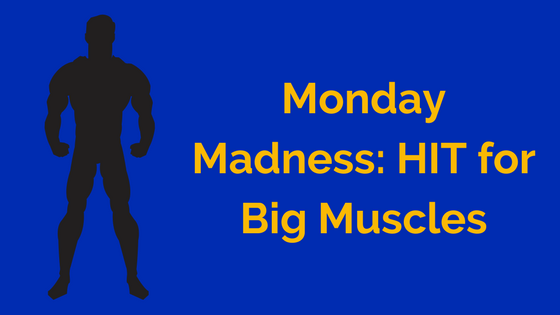
High Intensity Training (HIT) has been around for many years. There are those who swear by it and those who scoff at it. Let's see what the evidence holds in relation to the effectiveness of HIT and then let's talk about a great HIT workout that can build mass quickly.
What is HIT?
HIT is a style of progressive resistance exercise characterized by a high level of effort and relatively brief and infrequent workouts, as opposed to typical training methods involving low to moderate levels of effort and longer, more frequent workouts. Nautilus inventor Arthur Jones helped define and popularize high intensity training in the 1970’s, often summarizing the general philosophy as “…train harder, but train briefer” or “…train harder, but train less often”.
Overload is the primary principle behind weight training. To increase muscle mass you must increase the demand on your muscles. The more intense an exercise is, the greater the degree of overload on the muscles.
During high intensity training exercises are typically performed with all-out effort, until it is impossible to perform another repetition in good form. While training to momentary muscular failure is not necessary to stimulate increases in muscular strength and size, it ensures one has done all they can for that purpose. Some people believe regularly training to muscular failure is too stressful on the body – specifically the central nervous system – however this is not a problem as long as the volume and frequency of training are not excessive.
HIT methods include performing sets at a different cadence, changing up the repetitions performed, as well as the number of exercises and frequency of training. Each method demands a high degree of effort on your part as the trainee.
HIT Guidelines
The following are general guidelines for high intensity training. The specific volume and frequency of training and exercise selection should be modified to suit the individual, based on level of conditioning, response to exercise, and goals.
- Training Frequency: Beginners should perform no more than three workouts per week on non-consecutive days. Advanced trainees may need to work out less frequently, not more. This sounds counterintuitive, but it actually works.
- Training Volume: Perform one set of one to three exercises for each major muscle group (fewer exercises for full-body workouts, more for body-part workouts in a split routine).
- Number of Repetitions: A wide range of repetitions can be effective, but for a good balance of muscular strength and size, cardiovascular and metabolic conditioning, and safety a moderate to high repetition range resulting in a time under load between 45 and 90 seconds is recommended .
- Progression: Beginners should increase the weight used for an exercise by about five pounds or five percent (whichever is less) when the upper target repetition number can be completed in good form. Weight should be progressed by smaller increments as trainees become more advanced, and very advanced trainees should increase the weight by as little as one pound or one percent (whichever is less).
- Repetition Speed: Move slowly enough to maintain strict control over your body position and path of movement and to reverse direction smoothly between lifting and lowering. Avoid fast, jerky movements.
- Range of Motion: Full-range repetitions, partial-range repetitions, and isometrics are all effective when performed properly.
Monday Madness HIT Workout
| Exercise | Sets | Repetitions |
| Squat | 1 | 4-6 |
| Chin up | 1 | 10-12 |
| Bnech Press | 1 | 4-6 |
| Bent Over Row | 1 | 4-6 |
| Overhead Press | 1 | 4-6 |
| Stiff leg deadlift | 1 | 4-6 |
| Calf Raise | 1 | 10-12 |
| Deadlift | 1 | 4-6 |
Conduct this workout 3 days per week with at least 1 full day of rest in between workouts. Go to failure. If you exceed the repetition range it means the weight was too light and you should increase it during your next workout. Keep at this for 12 weeks and you will love what you see in the mirror!
